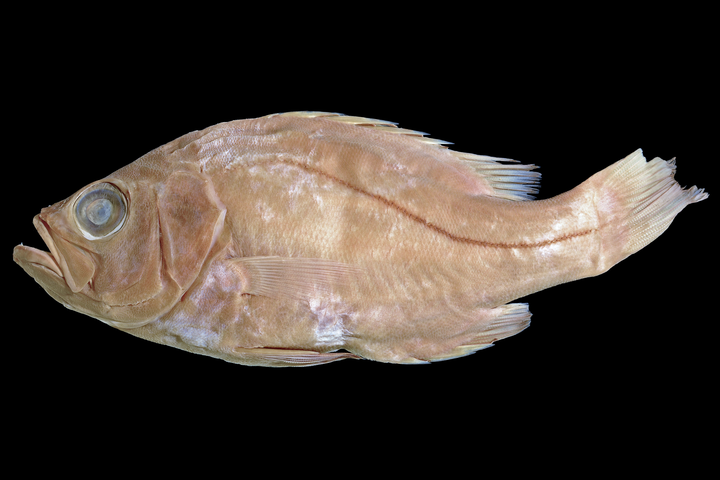Investigations into the ancestry of the Grape-eye Seabass (*Hemilutjanus macrophthalmos*) reveal novel limits and relationships for the Acropomatiformes (Teleostei: Percomorpha)
 Part of Fig. 1
Part of Fig. 1
Abstract
For more than 175 years, an unremarkable and uncommonly collected bass-like fish, the Grape-eye Seabass (Hemilutjanus macrophthalmos), has been known from coastal waters in the tropical Eastern Pacific. During that time, its phylogenetic placement and classification has either been ignored or contested, leading to researchers describing a monotypic family of unknown placement for this species in 2020. A preliminary osteological examination of Hemilutjanus hinted that this species may have affinities with the recently recognized order Acropomatiformes. To test this hypothesis, we conducted a molecular phylogenetic analysis using sequence data from 457 ultraconserved element loci and nine Sanger-based loci to study the placement of Hemilutjanus and the limits and relationships of the Acropomatiformes. Here we show that Hemilutjanus is not only an acropomatiform, but it is best classified as a member of the Malakichthyidae. Further, our study alters the composition of the Acropomatiformes by including members of the genus Schuettea (typically classified as a monodactylid) and excluding members of the Leptoscopidae. Our results also corroborate earlier studies that have recovered a polyphyletic Polyprionidae; accordingly, we diagnose and describe Stereolepididae, new family, for both species of Stereolepis. With these revisions, the Acropomatiformes is now composed of the: Acropomatidae; Banjosidae; Bathyclupeidae; Champsodontidae; Creediidae; Dinolestidae; Epigonidae; Glaucosomatidae; Hemerocoetidae; Howellidae; Lateolabracidae; Malakichthyidae; Ostracoberycidae; Pempheridae; Pentacerotidae; Polyprionidae; Scombropidae; Stereolepididae, new family; Symphysanodontidae; Synagropidae; and the genus Schuettea. Finally, we compare our revised phylogenetic hypothesis to previous phylogenies and use our resulting hypothesis to trace the evolution of bioluminescence and the invasions of the deep sea in this clade. Our results demonstrate that unlike most other percomorph groups, acropomatiforms repeatedly evolved bioluminescence and transitioned between shallow waters and the deep sea.
Almetric and Dimension badges